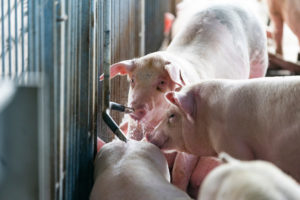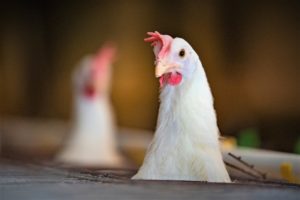Texas A&M AgriLife receives grants for animal disease response, prevention
Funding to improve testing, policy- and decision-making
Two grants awarded to Texas A&M AgriLife will fund studies to improve responses to outbreaks of animal diseases like avian and swine flu in the U.S.

The U.S. Department of Agriculture Animal and Plant Health Inspection Service National Animal Disease Preparedness and Response Program, NADPRP, awarded two grants totaling $668,166 to Texas A&M AgriLife Research and the Institute for Infectious Animal Diseases, IIAD. The grant funding is directed toward two projects designed to address animal disease outbreak response and mitigation.
Heather Simmons, DVM, IIAD director, Bryan-College Station, said the projects were in response to farm bill funding regarding national preparedness and responses in animal health.
“Disease outbreaks ongoing and in the past certainly identify the need for bolstering our preparedness and response capabilities,” she said. “Improving our proactive and reactive procedures can help mitigate industry exposure to these events that impact our producers and ultimately consumers.”
Improving responses to animal diseases
A $500,000 joint-funded grant by the NADPRP and National Animal Health Laboratory Network, NAHLN, is designed to adapt a framework for point-of-care, POC, diagnostic tests for livestock and aquaculture and assess the cost-benefit impacts for importation of POC diagnostic tests during foreign animal disease outbreaks.
The project consortium includes investigators from Texas A&M Veterinary Medical Diagnostic Laboratory, Oklahoma Animal Disease Diagnostic Laboratory, the Center for Food Security and Public Health at Iowa State University and the University of Liverpool.
Simmons said the project is a response to the challenges high-consequence animal disease outbreaks pose to producers and animal health agencies that respond to these emergencies, including essential testing and POC assays as part of eradication efforts. NAHLN laboratories are part of these responses.
Application of these assays will require methodical consideration, which includes the economic impact analysis for importation, licensing and use within the U.S., she said. The study seeks to answer those questions regarding the assays for approval and improvements.
The project will also determine when and where POC assays would be used and how to incorporate a testing framework into state animal health planning activities, Simmons said. The process will include tabletop discussions and exercises with stakeholders involved in responses for the development of a position statement and policy recommendations for the POC framework.
Pilot program to inform outbreak policy, procedures
NADPRP also provided $168,166 to create a standardized response plan for disease outbreaks within poultry production nationwide.

The goal is to protect poultry industry stakeholders in emergencies, including outbreaks of diseases like highly pathogenic avian influenza, Simmons said.
Over the next 18 months, IIAD, the College of Agriculture and Life Sciences and AgriLife Research personnel will develop and implement the pilot program to help state animal health officials build public/private partnerships with commercial poultry facilities.
Simmons said this effort will create a national poultry industry training program that will provide specialized education opportunities for state animal health officials. One-week short courses will enhance emergency management competencies and increase the capabilities, capacity and readiness of the agricultural community facing reportable animal diseases like avian influenza.
Two cohorts of policy- and decision-level state and federal animal health officials will be trained as part of the pilot program. Courses will include classroom work, site visits and field training. The training will be supported by poultry industry representatives who will provide access to facilities and expertise.
The goal is to provide trainees with an awareness and understanding of current commercial poultry business models and provide officials information that will inform disease emergency management policy and procedures.
IIAD will work with animal health officials and industry to identify and nominate personnel for each cohort, which will be limited to eight individuals to allow for extensive, hands-on experience and instruction for trainees.
“Improving our testing and eradication responses and providing valuable perspective to inform decision- and policy-makers are two components we believe will help our protein-production systems,” Simmons said. “These are steps to protect everyone who has a stake in these multi-billion-dollar industries that impact rural economies and individual producers and represent major links in our food supply chain.”


